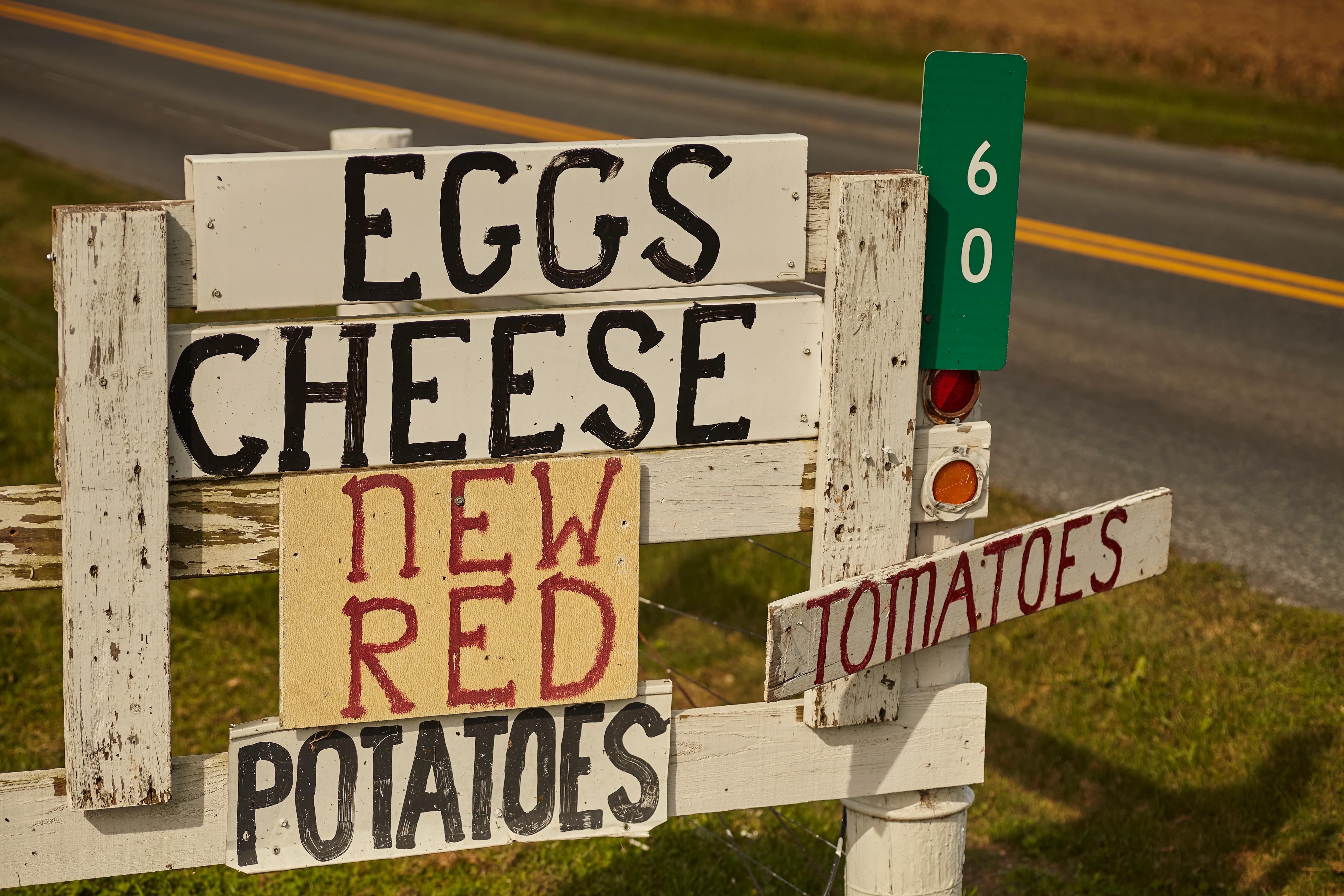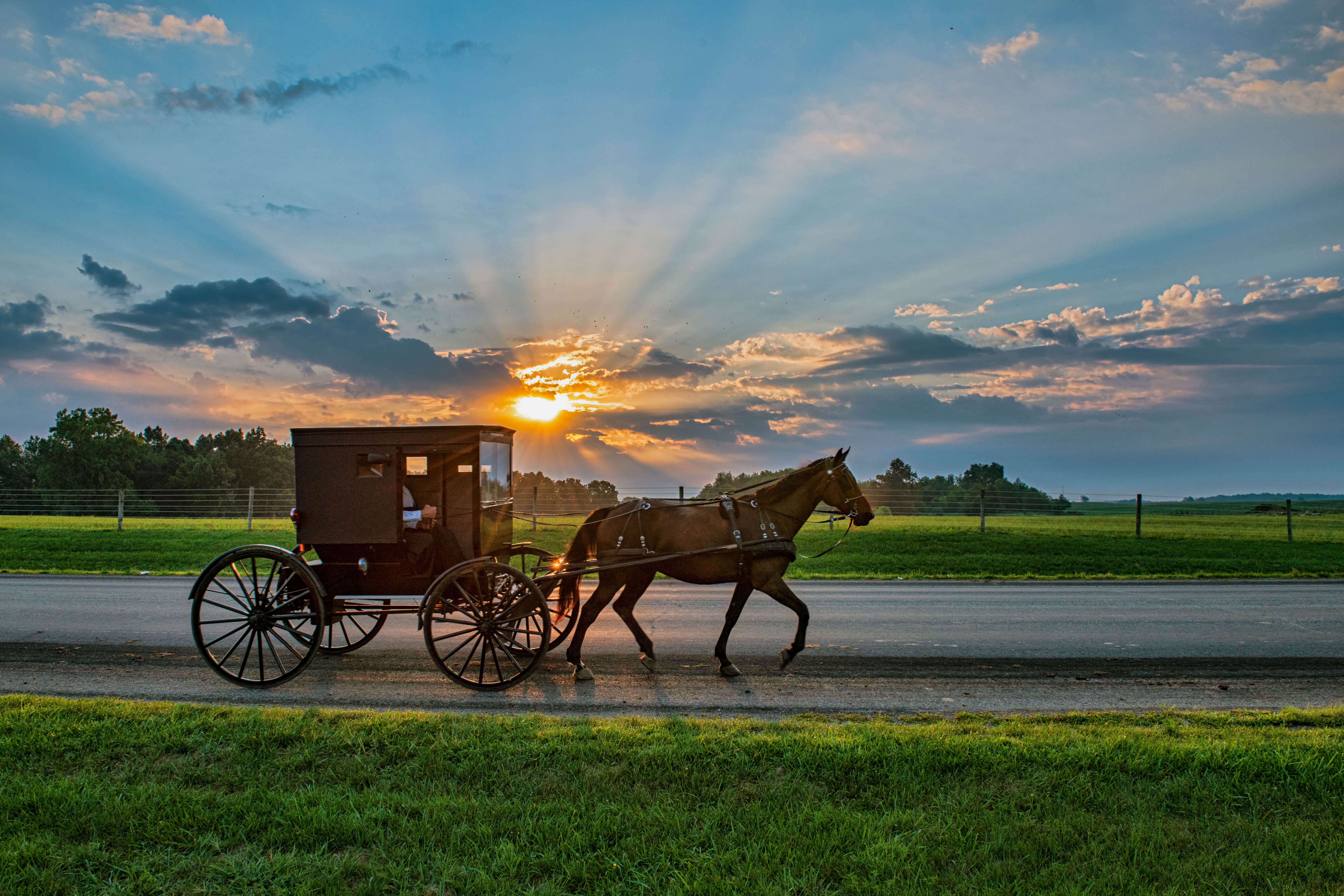The Tradition of Amish Produce Stands: More Than Just Produce
Discover the cherished tradition of Amish roadside produce stands, where each farm stand offers a taste of community, trust, and farm-fresh abundance.

The Tradition of Amish Produce Stands: More Than Just Produce
Amish produce stands represent more than simple roadside commerce—they are a living tradition that connects farm, family, and community. In Lancaster County’s countryside, these hidden gems deliver farm-fresh fruits, vegetables, and homemade goods straight from the fields and farm kitchens to customers:contentReference[oaicite:0]{index=0}. Lancaster prides itself on being a *locavore* community where “farm-fresh” and *farm-to-table* aren’t just trends, but a way of life that has always been:contentReference[oaicite:1]{index=1}. Each Amish roadside stand offers a glimpse into a culture of simplicity, trust, and dedication to quality harvests.
Cultural Significance
Community and Trust
For the Amish, growing and sharing food has long been a cornerstone of community life. Although today only about one-third of Amish families in Lancaster County still live on farms:contentReference[oaicite:2]{index=2}, those who do farm carry on the tradition of selling their bounty directly to neighbors and visitors. This direct exchange fosters a special bond—customers know they’re getting produce straight from the source, and Amish farmers trust in an honor system that is still very much alive in Lancaster County:contentReference[oaicite:3]{index=3}. Many roadside stands are unmanned; you might find a table or wagon stocked with produce and a cash box for payment. Even if no one is present, shoppers are expected to pay fairly for what they take, a practice that reflects the mutual trust and honesty valued in Amish culture:contentReference[oaicite:4]{index=4}:contentReference[oaicite:5]{index=5}. This sense of trust turns a simple produce transaction into a meaningful community connection.
Simplicity and Values
Amish roadside stands are humble and unassuming, reflecting core values of simplicity and humility. You won’t find neon signs or flashy advertisements—often just a hand-painted sign or a rustic wagon marks the stand, in keeping with the Amish preference for plain presentation. Many stands operate dawn to dusk and close on Sundays out of religious observance:contentReference[oaicite:6]{index=6}:contentReference[oaicite:7]{index=7}, underscoring how faith and family take priority over commerce. It’s not uncommon for these stands to be a family affair: children might help restock produce, and grandparents often manage the stand as their contribution to farm life:contentReference[oaicite:8]{index=8}. Visitors are welcomed with a friendly yet low-key hospitality. However, certain courtesies are expected in return—respecting Amish customs by, for example, not photographing the owners if they are present, as posing for pictures conflicts with their beliefs:contentReference[oaicite:9]{index=9}. In every aspect, Amish produce stands embody a way of doing business that is personal, straightforward, and aligned with their values.
Seasonal Bounty and Variety
Fresh from the Fields
One of the joys of Amish produce stands is eating with the seasons. Throughout spring, summer, and fall, the selection of fruits and vegetables reflects what’s ripe in the fields that week. The summer harvest in Lancaster County brings an abundance of favorites: sweet corn, juicy tomatoes, crisp string beans, cucumbers, melons, peaches, and more:contentReference[oaicite:10]{index=10}. Nothing says summer like Lancaster County sweet corn – known for its tender *bread-and-butter* bicolor kernels and the prized white *Silver Queen* corn – available from mid-July through early fall:contentReference[oaicite:11]{index=11}. Tomatoes are another star crop; in fact, Lancaster is Pennsylvania’s largest tomato-producing county, and areas like Washington Boro even hold festivals celebrating their particularly flavorful tomatoes:contentReference[oaicite:12]{index=12}. As summer turns to autumn, roadside stands overflow with apples, pumpkins, gourds, and mums, showcasing the full spectrum of the harvest season:contentReference[oaicite:13]{index=13}. Much of the region’s farmland is dedicated to field crops, but the Amish often cultivate extensive kitchen gardens of produce varieties picked at peak ripeness and sold directly at their stands:contentReference[oaicite:14]{index=14}. This means what you buy was likely harvested just hours before, ensuring exceptional freshness and flavor.
Homemade Treats and More
While produce is the centerpiece, Amish roadside stands frequently offer more than just produce. In fact, stopping at a stand can feel like visiting a tiny farmers’ market brimming with homemade delights:contentReference[oaicite:15]{index=15}:contentReference[oaicite:16]{index=16}. You’ll often find an array of other goods, including:
Each stand has its own personality and offerings, but all provide a genuine taste of Amish home life. You could pick up a quart of strawberries, a loaf of warm banana bread, a jar of pickled beets, and a bunch of fresh flowers—all in one stop, and all directly from an Amish farm. Where else can you find a bouquet of sunflowers, vine-ripened tomatoes, a just-baked shoofly pie, and an ice-cold root beer, all for a reasonable price? Lancaster’s roadside stands truly can’t be beat:contentReference[oaicite:24]{index=24}.
Visiting Amish Produce Stands
What to Expect
Visiting an Amish produce stand is a delightful step back to a simpler time. Stands range from a simple honor-system table at the end of a farm lane to larger open-air markets under a barn overhang. Don’t be surprised if the “stand” is literally a wagon pulled up to the roadside, loaded with today’s harvest under a canvas awning:contentReference[oaicite:25]{index=25}. Other stands might be small sheds or storefronts on the farm property, sometimes stocked with refrigerators cooled by ice or generators to keep dairy products fresh. There is usually a chalkboard or handwritten sign listing the day’s prices. Parking is typically just along the shoulder of a country road or in a little gravel pull-off—be sure to pull fully off the road and not block traffic when you stop:contentReference[oaicite:26]{index=26}. The setting is informal: you may hear chickens clucking or see laundry drying on a line nearby, and you’ll likely enjoy the picturesque view of farm fields as you shop.
If an Amish family member is tending the stand, you can expect a polite greeting and efficient service, though conversation will be friendly and modest. Larger stands may have a few people shopping at once, but many times you might be the only visitor, especially on a quiet weekday. Remember that Amish businesses operate on *their* time: an Amish produce stand may open and close according to the day’s chores and the supply of goods. It’s wise to visit earlier in the day for the best selection, since once the corn or berries sell out, the stand may close up. Also, nearly all Amish stands shut down on Sundays (and many close by late Saturday afternoon), in keeping with the Amish tradition of a day of rest:contentReference[oaicite:27]{index=27}:contentReference[oaicite:28]{index=28}. Planning your farm stand tour for Monday through Saturday will ensure you don’t arrive to find an empty stand. And if you do find the stand unattended, simply follow the instructions to pay on the honor system, and enjoy the chance to experience this refreshingly uncomplicated way of doing business.
Etiquette and Tips
Visiting an Amish roadside stand is easy and welcoming, but following a few simple guidelines will help you “act like a local” and show respect for the owners:contentReference[oaicite:29]{index=29}:
By following these simple tips, you’ll not only come away with delicious goods, but also the satisfaction of participating in a trusted local tradition.
The Value of Tradition
Unmatched Freshness and Quality
Buying from an Amish produce stand guarantees a level of freshness and quality that supermarkets can hardly match. The fruits and vegetables you find at these stands are often picked that very morning or the day before, at peak ripeness and flavor. This farm-to-table immediacy means you can literally taste the sunshine and rich Lancaster soil in each bite—whether it’s a sugar-sweet strawberry or a crisp, snappy green bean. Many Amish growers favor heirloom varieties and natural growing methods, focusing on flavor and nutrition over the uniformity required for long-distance shipping. Some Amish farm stands even specialize in organic or chemical-free produce and pasture-raised meats, reflecting a commitment to sustainable, healthy farming practices:contentReference[oaicite:38]{index=38}. The result is exceptionally fresh, nutrient-rich food for your family. Moreover, because the produce hasn’t traveled hundreds of miles, its carbon footprint is minimal. Eating from roadside stands is not just a treat for the taste buds, but also a choice that supports environmentally friendly, seasonal eating.
Supporting Local Families and Heritage
Every dollar spent at an Amish roadside stand is an investment in the local community and in preserving a way of life. These stands are often family-run, and your patronage helps Amish farm families make a livelihood from the land, enabling them to continue traditions passed down for generations. In an era of big-box stores and global supply chains, an Amish produce stand is the opposite: it’s personal, small-scale, and community-centered. The money you pay for a basket of tomatoes or a jar of jelly goes directly to the family who grew or made it, helping them pay for farm expenses and household needs. In turn, this supports the broader Lancaster County rural economy and keeps the landscape of small farms alive:contentReference[oaicite:39]{index=39}.
There’s also a less tangible but profound benefit: when you buy from these stands, you are engaging with and appreciating the Amish heritage. You’re supporting people who choose a life of simplicity and hard work, and encouraging the continuation of agricultural skills and recipes that might otherwise fade away. As one local innkeeper aptly put it, these roadside stands are *treasures* where *“every purchase supports local farmers and families”*:contentReference[oaicite:40]{index=40}. By filling your basket at an Amish farm stand, you become part of the story—helping sustain a rich cultural heritage while savoring the very best of Lancaster County’s farm-fresh flavor.
Tags
Featured Businesses
Article Information
Related Articles
